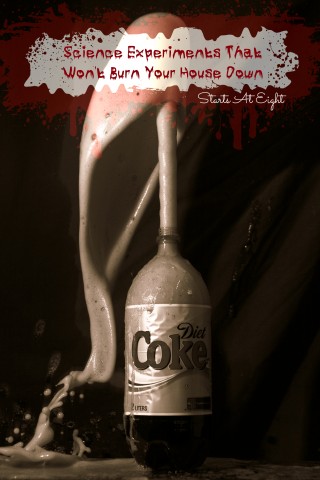Science Experiments That Won’t Burn Your House Down

There is only so much knowledge that can be derived from books and the Internet. Some subjects provide more of an impact if there is an element of “hands-on.” Science experiments are a great example of this.
Affordable At Home Science Experiments:
1. Powered by Food
Potato batteries are fun to make regardless of how old you are. This experiment demonstrates how chemical reactions within certain foods to specific metals can produce an electrical current.
Supplies You’ll Need:
• A potato
• Copper wire
• Zinc-coated screw
• Copper nail
• LED or small electronic device such as a small clock
By inserting the screw and nail on opposite ends of the potato, you instantly create a positive and negative terminal due to the chemical reactions. The copper nail becomes your positive lead in order to power your object. Simply tie a copper wire to each nail and screw and you have yourself a one volt potato – the amount of actual power may vary depending on the potato itself.
2. The Vacuum of Space
Teaching children the vacuum of space is a cheap experiment that requires few materials. In fact, the entire experiment should cost you less than one dollar.
Supplies You’ll Need:
• One small hard-boiled egg
• Glass bottle
• Wooden match
Strike the match and let it build a decent flame. Once you drop the match into the bottle, place the egg on the opening. As the flame consumes every bit of oxygen within the bottle, the egg will be
pulled in from the vacuum that is created. If you are unable to sustain a strong enough flame, you could also use small bits of paper to burn inside the bottle in order to create enough flame to consume the oxygen.
3. Diet Coke Geyser
This fun experiment was featured on an episode of Myth Busters as they attempted to make a geyser reach a certain distance in the air. This experiment is harmless to duplicate, although a bit messy.
Supplies You’ll Need:
• Two liter bottle of Diet Coke
• Package of Mentos
Once the Mentos are added to the beverage, the violent chemical reaction takes place creating a small geyser eruption immediately. Although you won’t blow yourself up with this experiment, it should still be completed outdoors as the geyser could reach to excessive heights of 15 feet or more.
4. Absorb or Reflect
Using water and paper, you can demonstrate to your children how sunlight interacts with different colors. This experiment can be very inexpensive to do and very effective in demonstrating which colors reflect sunlight better.
Supplies You’ll Need:
• Two identical glasses
• Water
• Thermometer – electronic or standard
• White paper
• Black paper
• Tape or rubber bands
By wrapping the paper around each glass and placing them out in the sun, you can see with the thermometer which colors make the water warmer than the other. It is this reason why summer
clothes and desert attire are made with bright colors or white materials. Science experiments within your home for your child don’t have to be expensive or dangerous. A simple experiment that the children can do themselves can go a long way to promoting knowledge of what is to come. Invest in your own methods to promote science within the home.
*Photo Credit to Mike Murphy
*This post contains affiliate links. See my Disclosure Policy for more details.


